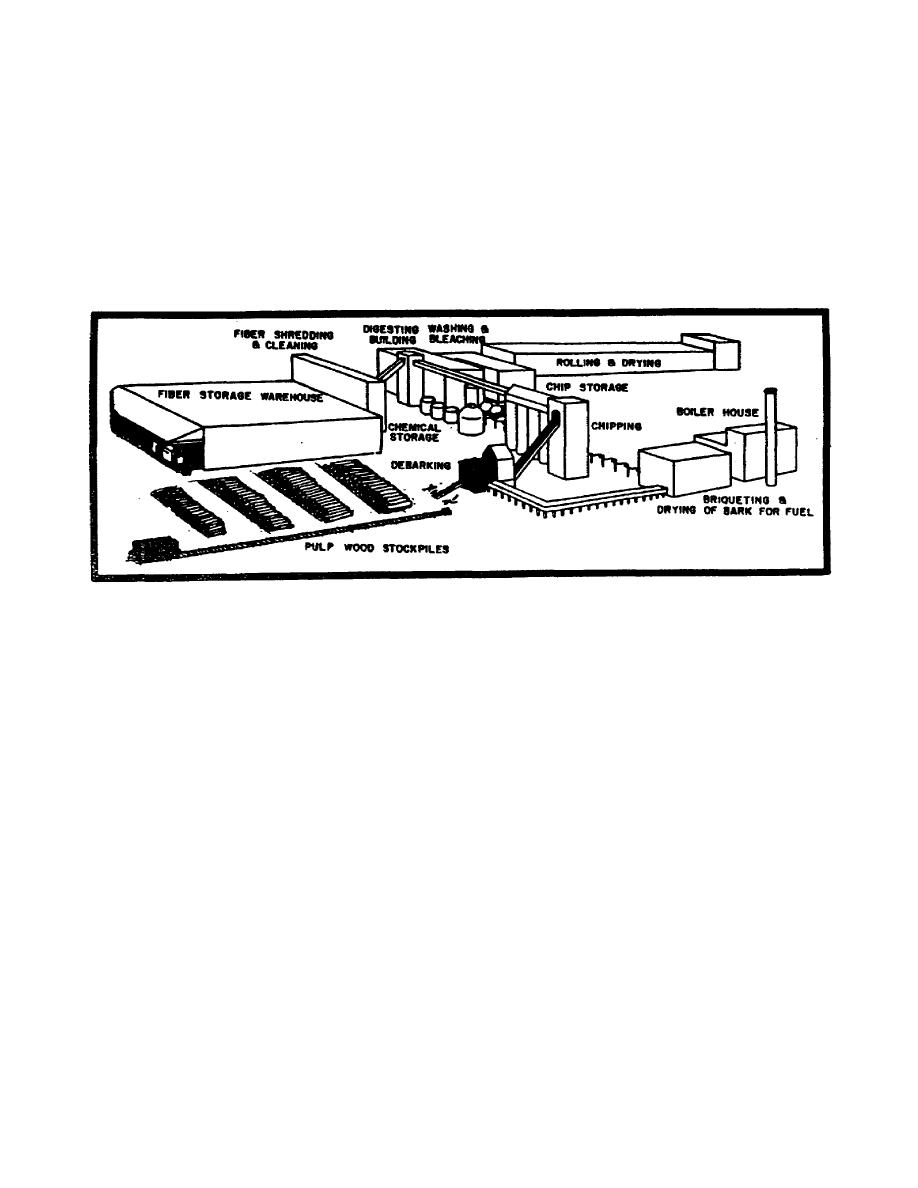
(3)
The cotton fibers or the chipped wood pulp will then be mixed
with caustic
soda and
cooked with steam in the autoclave building (not shown).
The wood or
fiber is
dissolved except for the cellulose fibers and the resulting
solution is
moved to
washing and bleaching where these are separated from the waste
materials.
(4) The cellulose fibers are washed and bleached and then moved to rolling and
drying where they are rolled into paper, dried, stored, and shipped.
(5) The waste material is sent to a chemical recovery area where it is treated
to recover the chemicals which are used.
NOTE: A water treatment facility is frequently located in the area to purify the
large quantities of water used in this industry.
Figure 2-50. Cellulose Pulp (Paper) Production.
b. Magnesia from brine (seawater) plants
(Figure
2-51)
are
normally
located
close to the coast for obvious reasons.
(1) The seawater is pumped to tanks where the grit and sediments are allowed
to settle and milk of lime is added to remove bicarbonate hardness.
(2) The clarified seawater then goes to the flocculator tank where an exact
amount of lime is added to react with the magnesium chloride and magnesium
sulphate. Magnesium hydroxide is formed and precipitated of solution and withdrawn
as a slurry into clarifiers (dorr thickeners) to be washed with fresh water which
has been treated for removal of bicarbonate hardness.
The magnesium hydroxide
settles to the bottom and water overflows carrying impurities with it.
IT 0673
62



 Previous Page
Previous Page
